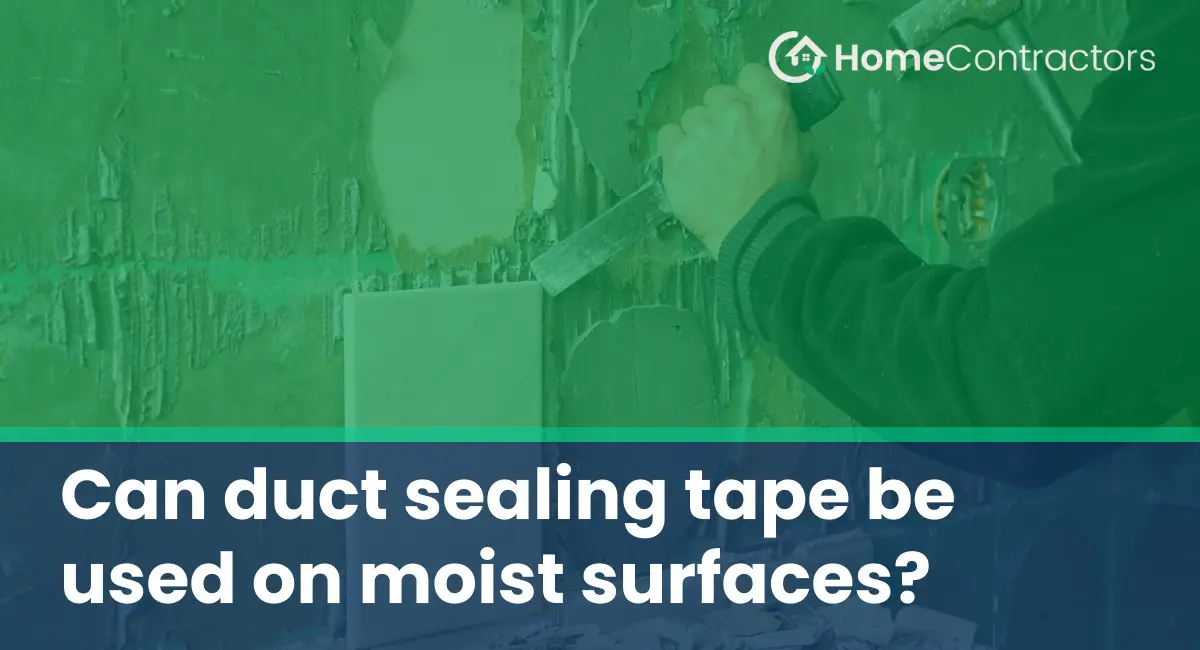Duct sealing tape is a versatile tool used in various applications, from sealing air ducts to securing cables. However, one common question that arises is whether duct sealing tape can be used on moist surfaces. In this article, we will explore this topic in depth to provide a comprehensive answer to this question.
Understanding Duct Sealing Tape
Before diving into the specificities of using duct sealing tape on moist surfaces, it is crucial to understand what duct sealing tape is and its intended use. Duct sealing tape, also known as duct tape or gaffer tape, is a strong, pressure-sensitive adhesive tape typically made from cloth with a flexible, waterproof backing.
Duct sealing tape is specifically designed to provide a secure bond on various surfaces, including metal, plastic, concrete, and fabric. It is commonly used for sealing air ducts, fixing leaks, bundling cables, and numerous other applications that require a reliable and durable adhesive solution.
Moisture and Duct Sealing Tape
When it comes to using duct sealing tape on moist surfaces, there are several factors to consider. Moisture can have an impact on the adhesive properties and effectiveness of the tape, so it is important to understand how it may affect its performance.
Adhesive Strength
One of the primary concerns when using duct sealing tape on moist surfaces is the adhesive strength. Most duct sealing tapes have a strong adhesive that can bond well with various materials. However, excessive moisture can weaken the adhesive’s grip, leading to reduced effectiveness in sealing or bonding applications.
Water Resistance
Although duct sealing tape is water-resistant, prolonged exposure to moisture can decrease its ability to repel water effectively. When used on moist surfaces, the tape’s water resistance may be compromised, potentially resulting in water seepage or reduced adhesion.
Surface Preparation
For optimal performance of duct sealing tape on moist surfaces, proper surface preparation is critical. Moisture should be minimized as much as possible before applying the tape. The surface should be dry, clean, and free of any oil, grease, or other contaminants that could hinder the tape’s adhesion. It is advisable to wipe down the surface with a clean, dry cloth and ensure it is completely dry before application.
Alternatives for Moist Surfaces
In situations where the surfaces are consistently moist or damp, it is recommended to explore alternative sealing options. There are specialized tapes available that are specifically designed for moist environments or wet conditions. These tapes often have stronger adhesives or additional sealing properties to ensure optimal performance in moisture-prone areas.
Additionally, using caulking or sealants that are specifically formulated for moist surfaces might be a better solution than duct sealing tape alone. These products offer enhanced water resistance and adhesion, providing a more reliable seal on moist surfaces.
While duct sealing tape can be used on moist surfaces to some extent, caution must be exercised. Excessive moisture can compromise the adhesive’s strength and the tape’s water resistance. Proper surface preparation is crucial to maximize the tape’s effectiveness. In situations where surfaces consistently remain moist, it is advisable to explore alternative sealing options designed explicitly for moist environments or consider using specialized sealants or caulking. By taking these considerations into account, you can make an informed decision on whether duct sealing tape is suitable for your specific application on moist surfaces.
